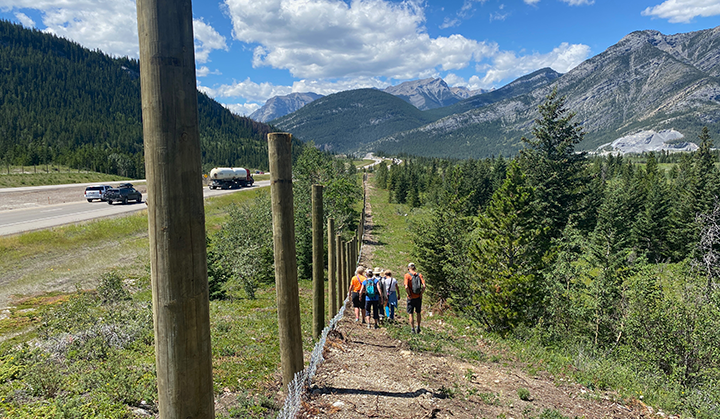You are helping build a system of safety in the Bow Valley and beyond
Y2Y champions connectivity in conservation and inspires solutions that benefit both people and nature.
By supporting our collaborative work, you have shown that you believe in this big vision — one where wildlife can roam vast intact landscapes, and where healthy nature also supports communities of people.
One way we help wildlife stay connected is to remove barriers to their movement, essential to their ability to survive and thrive. This often means advocating for roads, signage, bridges and other infrastructure that makes those connections easier. Keeping animals off roads also saves people’s lives.
“When Y2Y started in 1993, there were exactly zero wildlife crossing structures [in the Yellowstone to Yukon region]. Today, there are 117,” Y2Y’s president and chief scientist Dr. Jodi Hilty said in a recent CNN documentary feature on this success story.
The newest addition to this network of safe animal crossings will be the Stoney Nakoda Exshaw Wildlife Arch on the Trans-Canada Highway at Bow Valley Gap, just east of Canmore, Alberta. After years of research and making the case, this project broke ground in April 2022 — a reason to celebrate!
Right now, it’s like most other construction sites: heavy machinery rumbling down dusty paths, concrete being poured like cake batter into footings, and steel fences lining the road. But, as you know, it’s much more than another construction project.
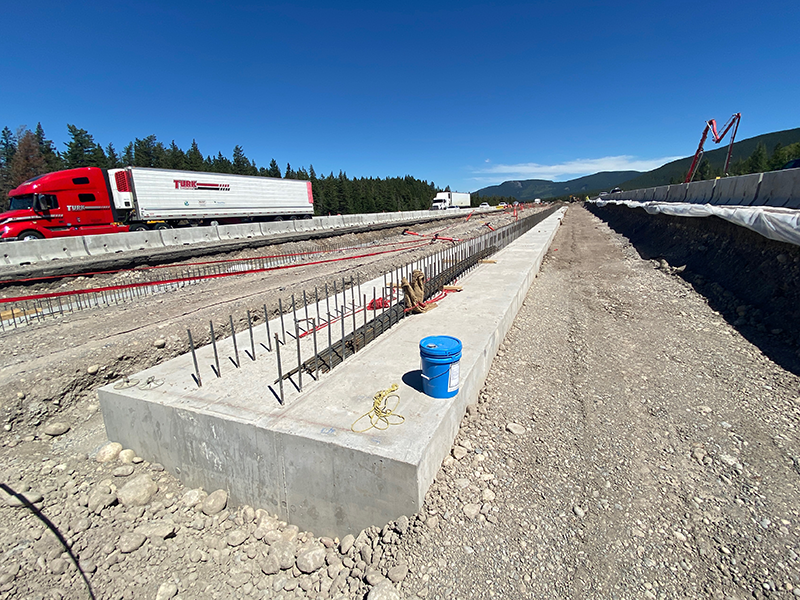
This wildlife overpass is a critical pathway for wildlife trying to reach habitats; the result of more than a decade of advocacy, science and support from thousands of people like you; a step in the right direction in respecting and realizing First Nations’ Treaty rights; hope, optimism and good news to uplift us; and it’s proof of the power of people coming together, often with different perspectives, to do something that benefits people and wildlife.
Not only is this the first wildlife overpass in Alberta to be built outside a national park — the leading network of wildlife crossings in the world — it’s another stepping stone to making highways safer, and connecting landscapes in the Bow Valley and beyond.
You are helping Y2Y ensure that measures to keep wildlife off roads are a normal part of transportation planning in Alberta, British Columbia and the United States.
Why here, why now?
Standing at the location of the future overpass, you look around and see diverse landscapes of towering mountains and grassy foothills.
Within sight is the majestic Îyâ Mnathka (Yamnuska), an iconic peak of the front range of the Eastern Slopes, and the vast Bow River valley stretching east to west — one of the four important east-west connectors in the Yellowstone to Yukon region, and one of three such valleys in Alberta. Îyâ Mnathka represents the “gateway” to the Rockies.
In the grasses, shrubs, and forests along the highway, there’s plenty of evidence of failed animal crossing attempts. Animals have been trying, and failing, for years to cross the highway — a stark reminder of its threat to the safety of wildlife and people.
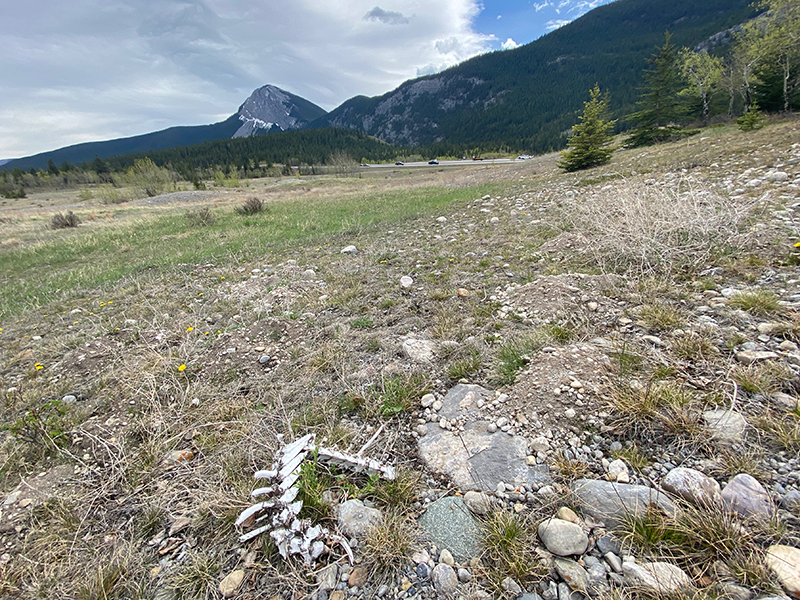
The Trans-Canada Highway cuts through wildlife corridors in the Bow Valley and further into the Yellowstone to Yukon region, and is only getting busier. More than three million vehicles drove past the overpass site in the first six months of 2022.
Many years of data on wildlife movement and mortality from vehicle strikes, along with the experiences of those who have driven the highway, show that deer and elk frequently try to cross at this location.
Other species such as grizzly bears, black bears, wolves and cougars also try to cross here to access key habitat and to move between Kananaskis Country, the Bow Valley, and north along the Eastern Slopes. This movement is important to keep gene pools diverse and connected, ensuring the health and vigor of these large mammal populations.
This is why we haven’t let up on getting this and other wildlife crossings built, and neither have you! It’s been a long time coming.
“I got to visit this overpass site on my very first day working at Y2Y in 2017 when it was a mere proposal in a document,” says Robin Forsyth, Y2Y’s donor relations co-ordinator. “To now see the action taking place, knowing more wildlife will be able to make it across this busy highway to their homes safely — and that my family and I will be safer on the road — is an amazing feeling.”
Finding common ground
Wildlife crossings are also a proven method to provide safe passage in a cost-effective manner. Every wildlife-vehicle conflict (WVC) comes with significant costs to society, including but not limited to injury or death, emergency response and insurance claims. On roads with high rates of WVCs, wildlife crossings and fencing structures often pay for themselves over time.
This is increasingly recognized by decision-makers and their constituents, including in Alberta.
Y2Y was pleased to be invited to speak at the official ground-breaking of the Stoney Nakoda Exshaw Wildlife Arch on April 7. We were among Chiefs of the Goodstoney (Wesley) and Chiniki of the Stoney Nakoda First Nations, and provincial and municipal government representatives, who all shared their perspectives on the importance of the wildlife crossing.
“Y2Y has done extensive work to study wildlife migration behavior. Thanks to your work, this site was selected as a logical place for an overpass,” said Rajan Sawhney, then Alberta’s Minister of Transportation, during the press conference. “The overpass will not only increase safety for the travelling public and wildlife, it will save thousands of dollars each year in property damage caused by collisions.”
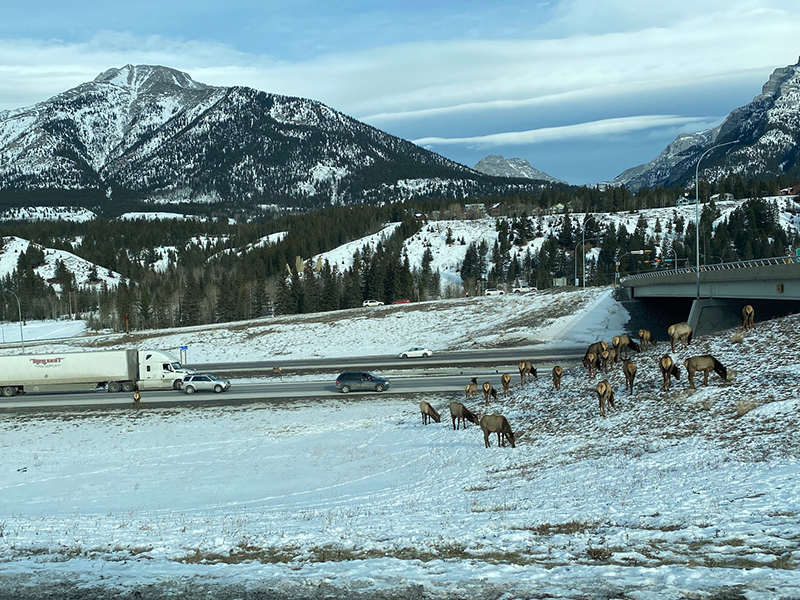
The crossing has also received formal support from local municipalities, first responders, businesses, tourism organizations, researchers and recreationists.
“We’re really grateful for the thousands of people who have advocated for this project over the years,” said Adam Linnard, Y2Y Alberta program manager. “Adding wildlife crossings to the Alberta government’s toolkit means we’re more likely to see overpasses in other areas of the province where they are needed as well.”
Creating connectivity is respecting animals and each other
The Stoney Nakoda First Nations (Bearspaw First Nation, Chiniki First Nation and Goodstoney First Nation) have continuously used, occupied and possessed these traditional lands — including where this overpass is being built. Their traditional territory ranged from the Great Plains, hunting buffalo, to the Rocky Mountain foothills and watersheds, where they harvested, fished and hunted big game, and over the mountain passes to the British Columbia interior.
The Stoney Nakoda are the original “peoples of the mountains” known in the Nakoda language as the Îyârhe Nakoda. Maintaining strong populations of wildlife is an essential step in respecting and realizing First Nations’ Treaty rights.
“Stoney people have been taught as part of our mandate to live well amongst each other. As we are gathered here in the heart, and the gateway of the mountains, we welcome each and every one who comes through here to get to their destinations on the highways… and at the same time we say let’s respect one another, especially our animals.”
Chiniki First Nation Chief Aaron Young
Chiniki Chief Aaron Young spoke at the ground-breaking gathering, highlighting the cultural significance of the wildlife crossing.
“Stoney people have been taught as part of our mandate to live well amongst each other,” he said. “As we are gathered here in the heart, and the gateway of the mountains, we welcome each and every one who comes through here to get to their destinations on the highways… and at the same time we say let’s respect one another, especially our animals.”
“The construction that’s coming about, we hold our hands high and we grasp this opportunity because we are coming together to protect and respect our animals as they have respected us,” added Chief Young.
When species such as grizzly bears, wolves, and elk come to a road, they may attempt a crossing and get hit, or avoid it all together. But, combined with fencing that acts as a guide, animals can learn to use these special crossings that are constructed just for them. Preserving animals’ movement and sustaining healthy populations is not just important for the ecosystem, but for communities of people as well.
Youth in the Nakoda Audio Visual (AV) Club share this story through the eyes of wildlife in their 2020 short animated film Helping Animal Friends Across Roads. The film has been wildly successful in communicating the message that wildlife crossings and fencing are good for everyone, and that more are needed.
A feature in the QuickDraw Animation Society newsletter said it perfectly: “We aren’t saying that the AV Club’s animation is the sole reason this new crossing is being built, but we aren’t not saying that, either… This is a great example of community-led initiatives making positive changes to our world, and we couldn’t be more proud of the AV Club for being part of it.
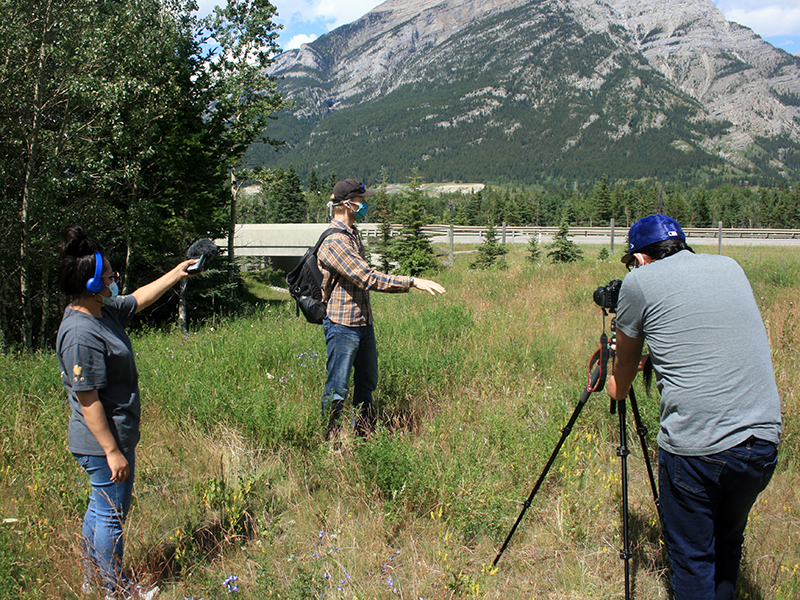
Cause for celebration
This is how support from folks like you and voices from a diverse community of people can lead to shovels in the ground. In times when it can feel daunting to bring about positive change, and even unachievable at times, we hope this news helps you feel connected to big-picture solution — and to a network of people working to help wildlife stay connected.
Knowing how far we’ve come, we hope that you can crack a smile and think, wow, I helped make that happen. Thank you.
